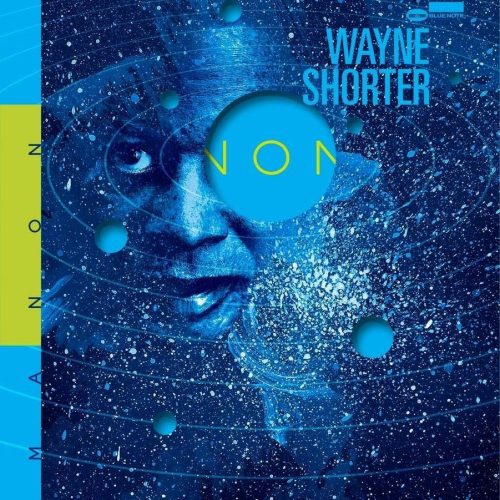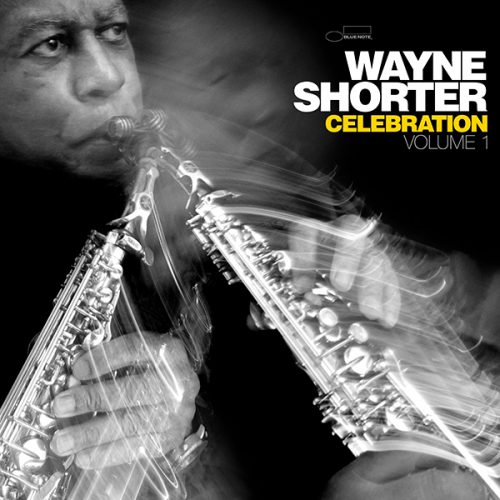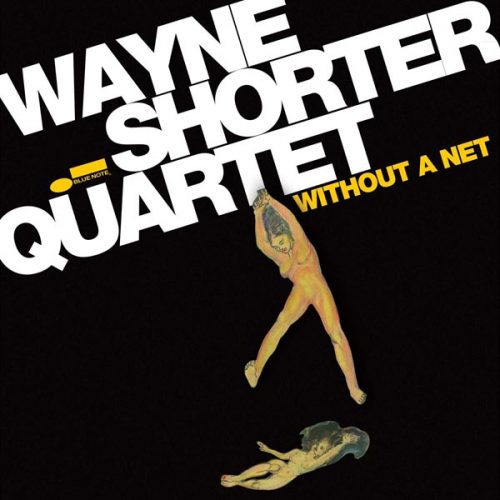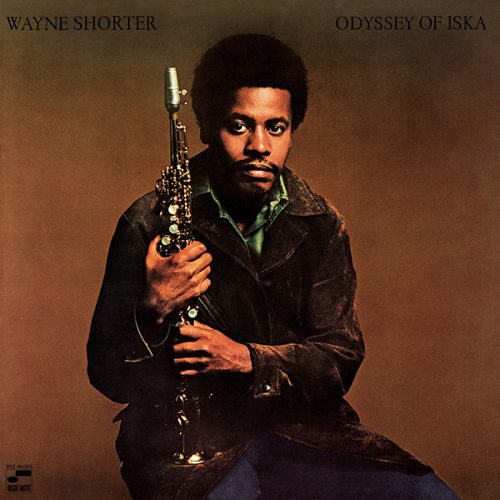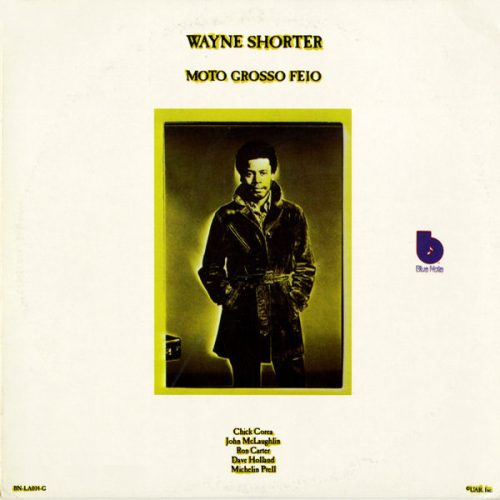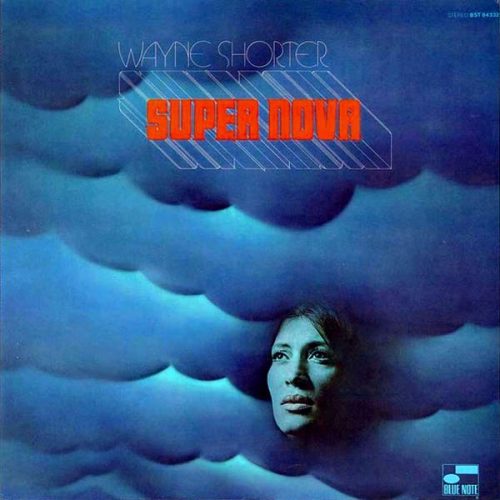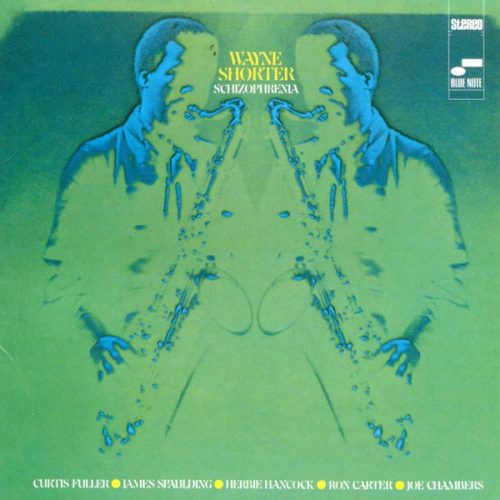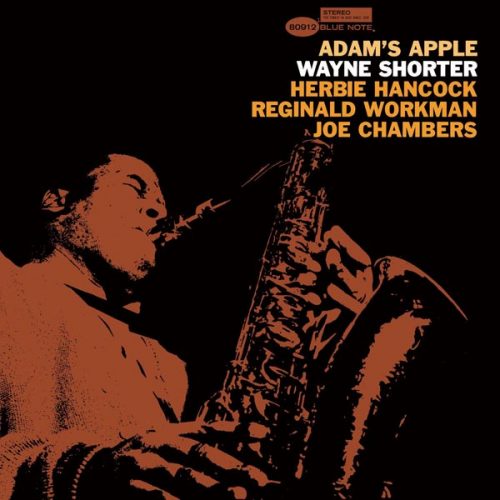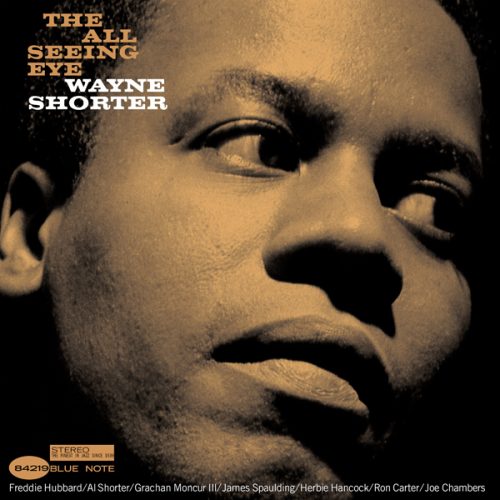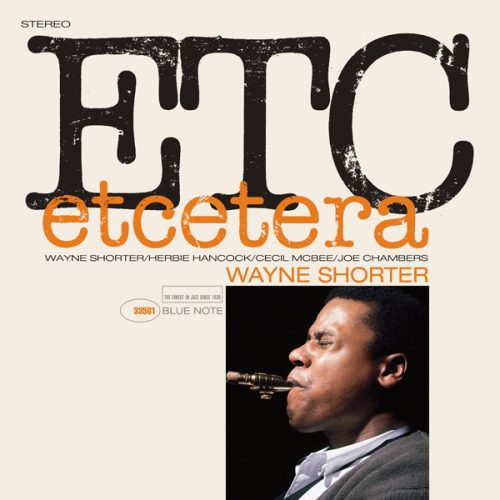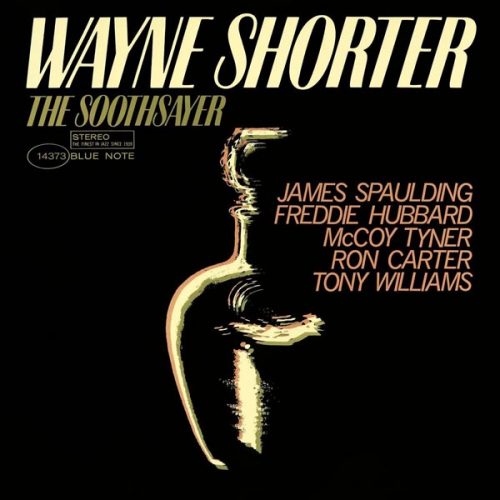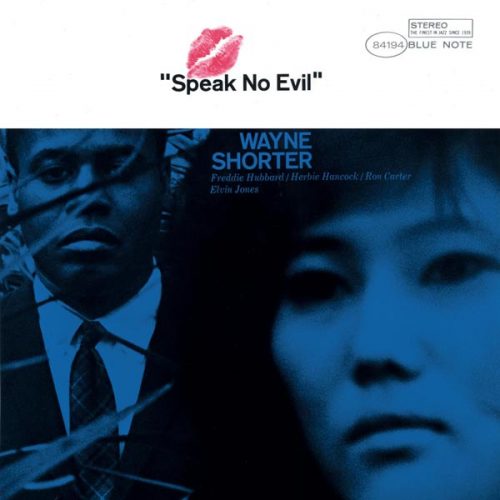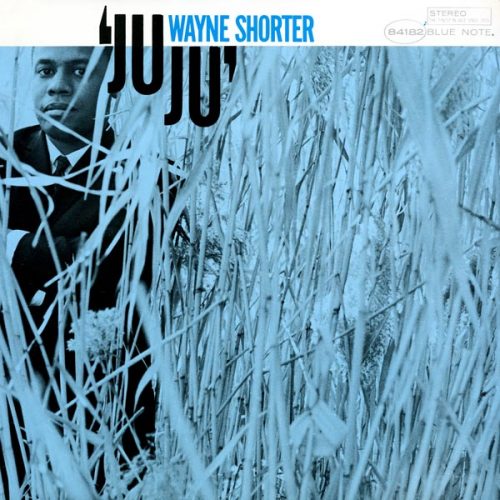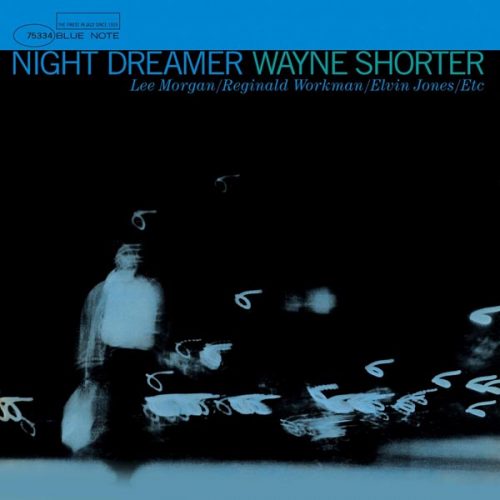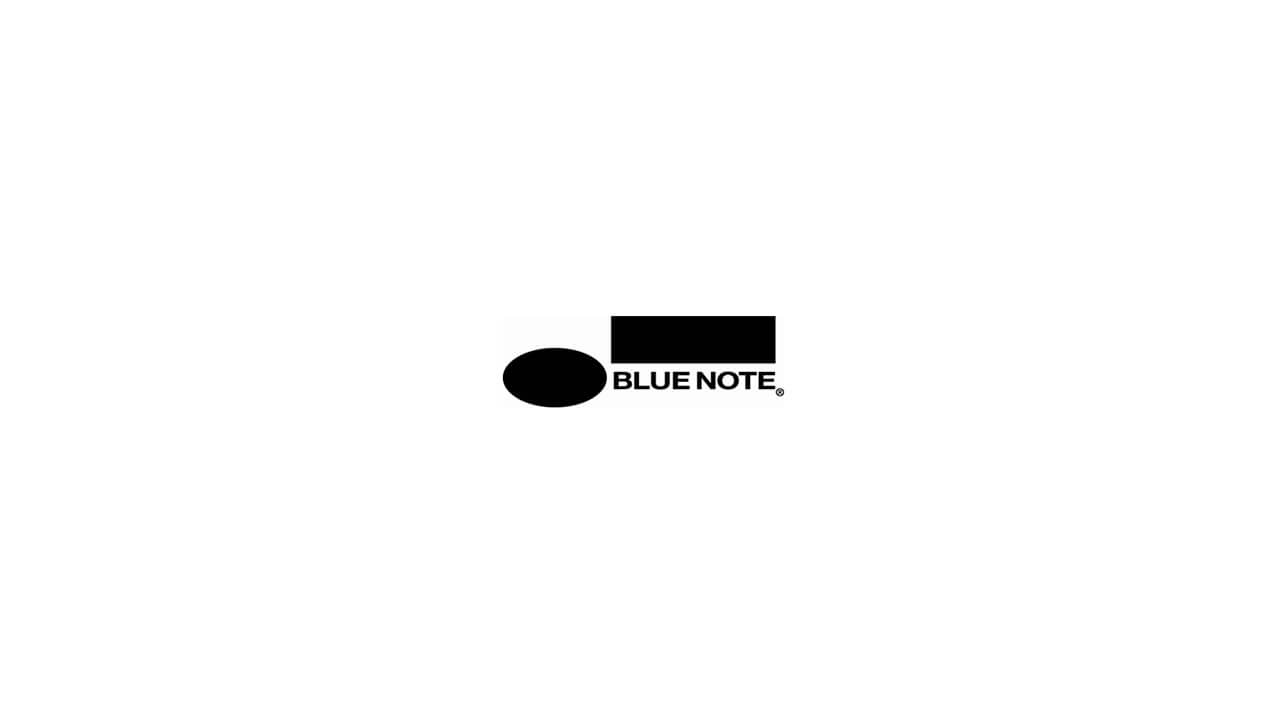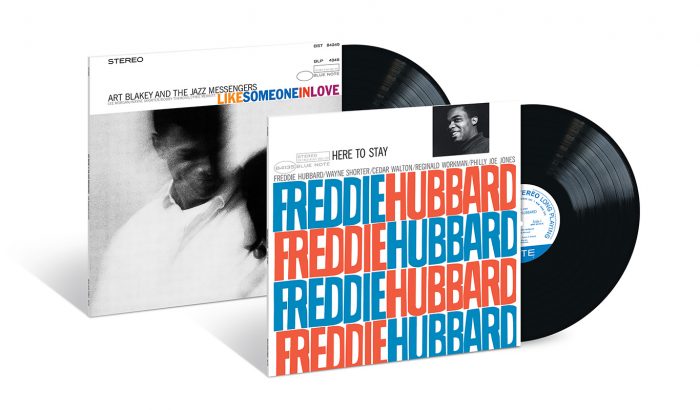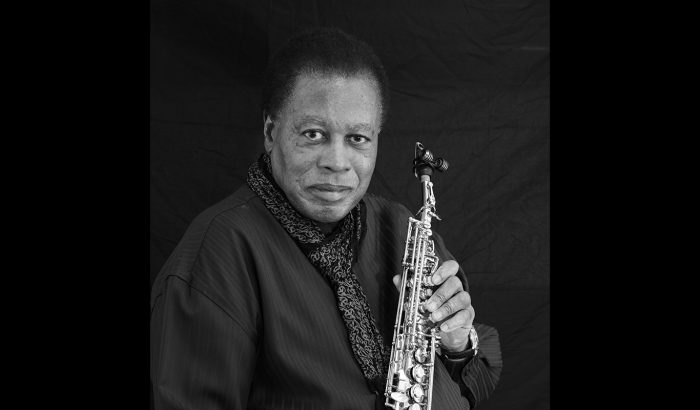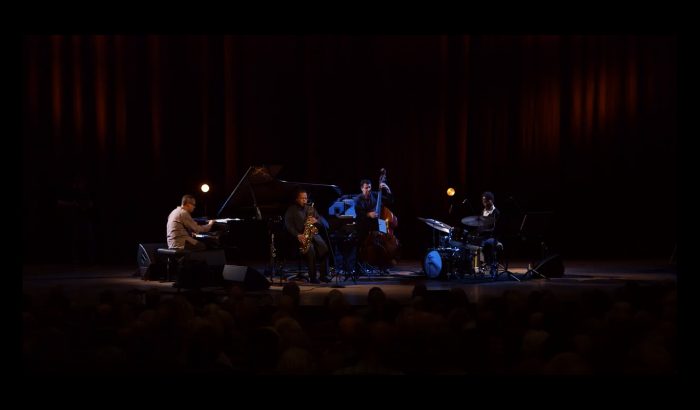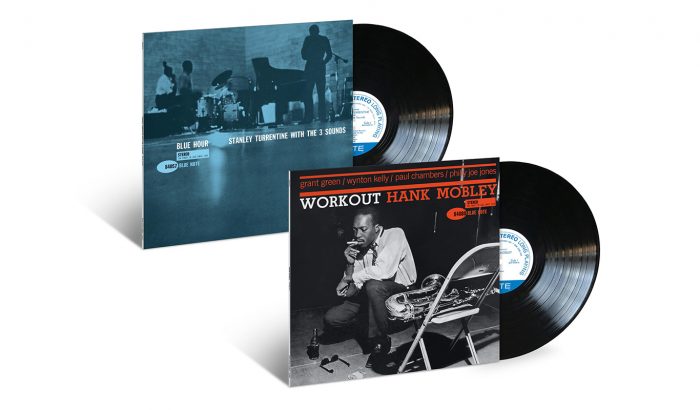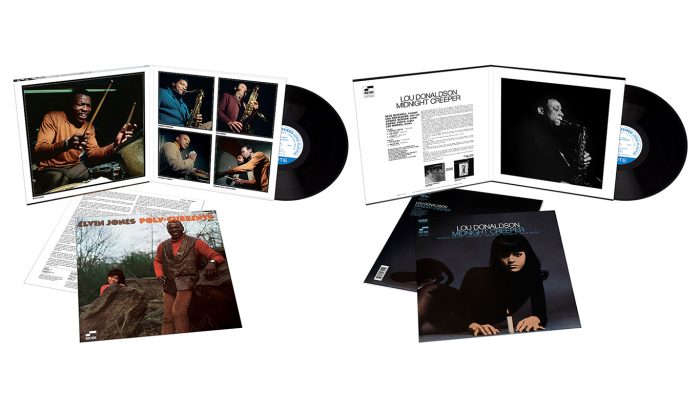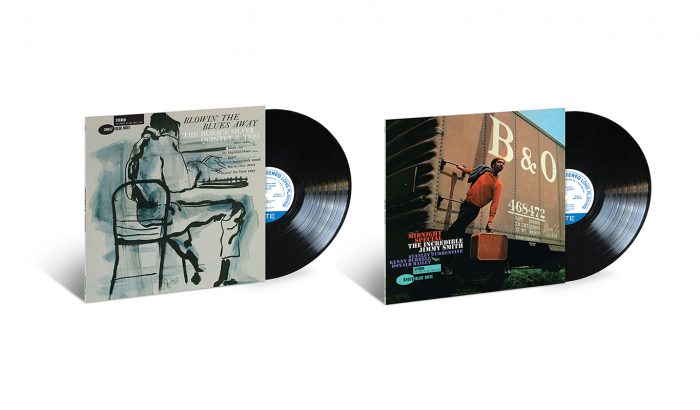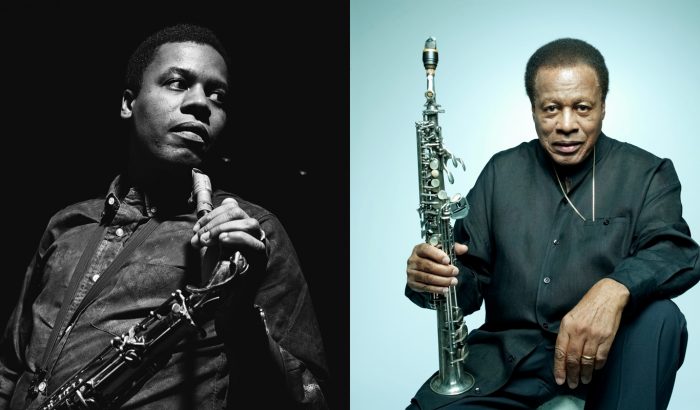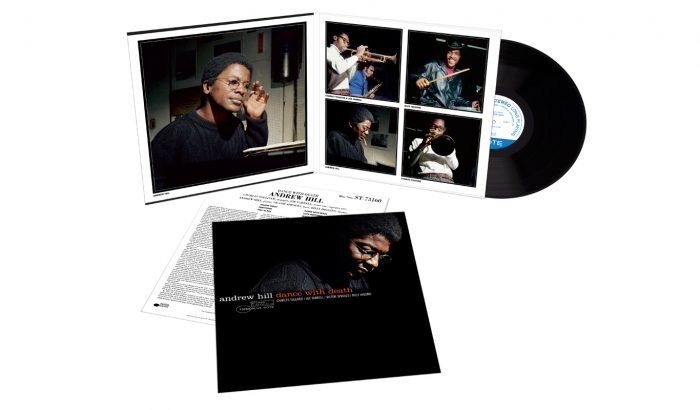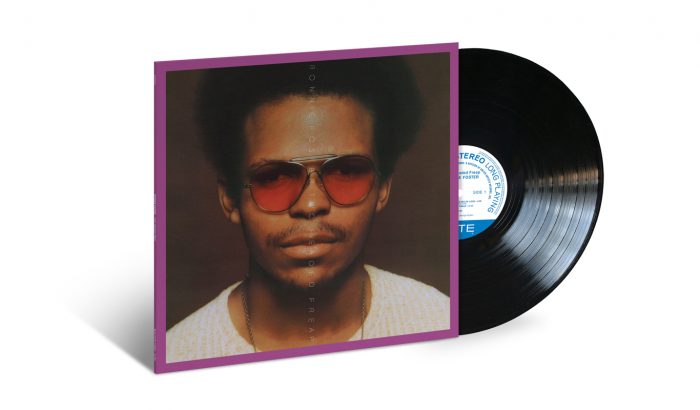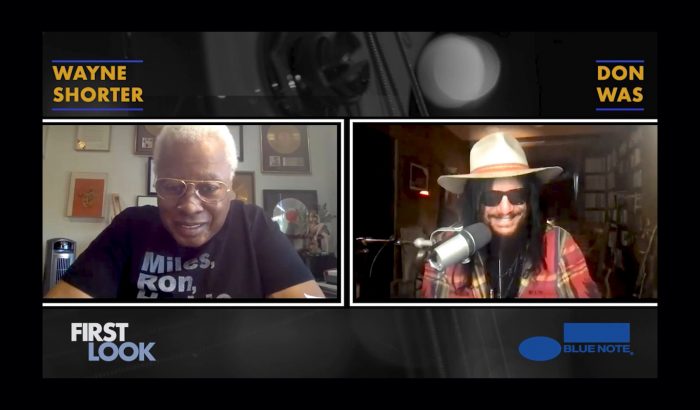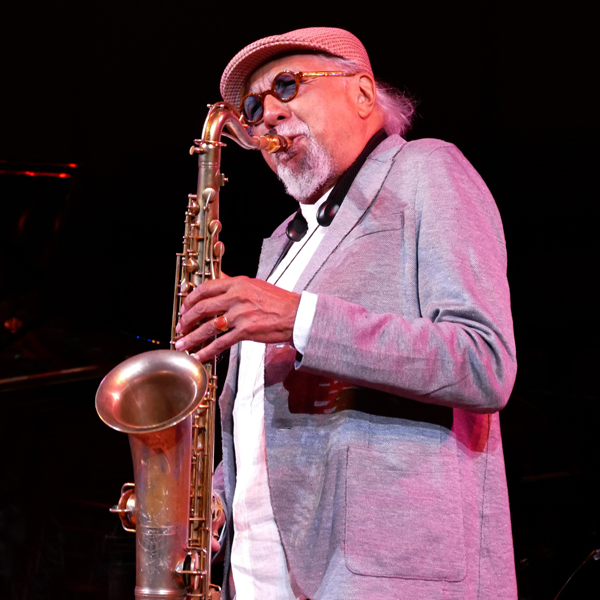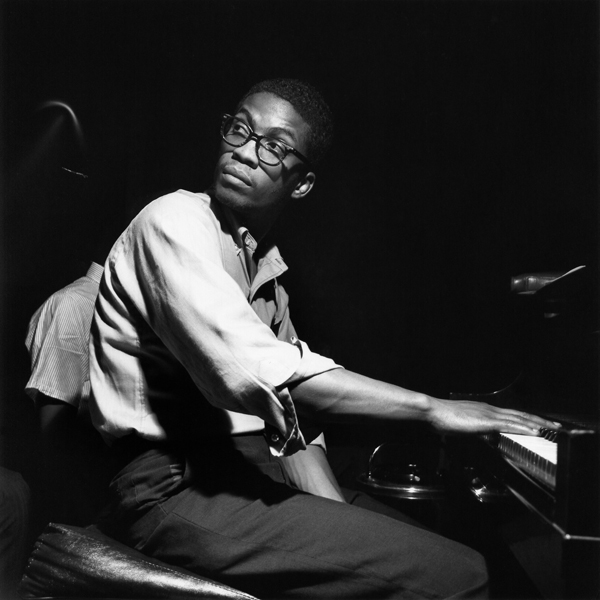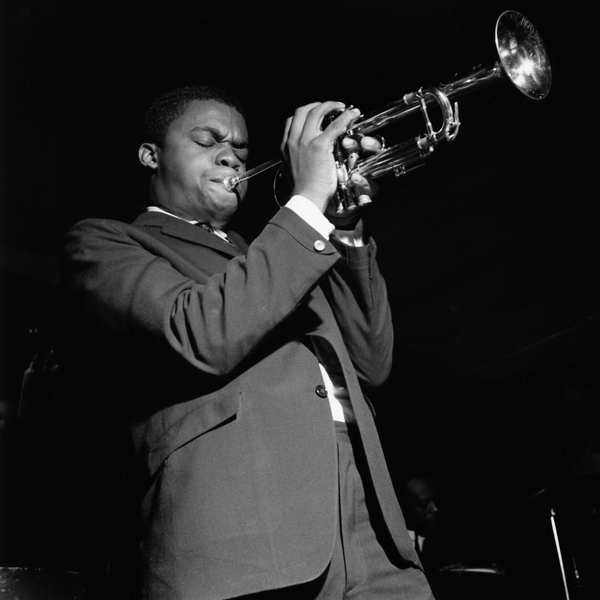Biography- Biography
Though some will argue about whether Wayne Shorter’s primary impact on jazz has been as a composer or as a saxophonist, hardly anyone will dispute his overall importance as one of jazz’s leading figures over a long span of time. Though indebted to a great extent to John Coltrane, with whom he practiced in the mid-’50s while still an undergraduate, Shorter eventually developed his own more succinct manner on tenor sax, retaining the tough tone quality and intensity and, in later years, adding an element of funk. On soprano, Shorter is almost another player entirely, his lovely tone shining like a light beam, his sensibilities attuned more to lyrical thoughts, his choice of notes becoming more spare as his career unfolded. Shorter’s influence as a player, stemming mainly from his achievements in the ’60s and ’70s, was tremendous upon the neo-bop brigade who emerged in the early ’80s, most notably Branford Marsalis. As a composer, he is best known for carefully conceived, complex, long-limbed, endlessly winding tunes, many of which have become jazz standards yet have spawned few imitators.
Shorter started on the clarinet at 16 but switched to tenor sax before entering New York University in 1952. After graduating with a BME in 1956, he played with Horace Silver for a short time until he was drafted into the Army for two years. Once out of the service, he joined Maynard Ferguson’s band, meeting Ferguson’s pianist Joe Zawinul in the process. The following year (1959), Shorter joined Art Blakey’s Jazz Messengers, where he remained until 1963, eventually becoming the band’s music director. During the Blakey period, Shorter also made his debut on records as a leader, cutting several albums for Chicago’s Vee-Jay label. After a few prior attempts to hire him away from Blakey, Miles Davis finally convinced Shorter to join his quintet in September 1964, thus completing the lineup of a group whose biggest impact would leapfrog a generation into the ’80s.
Staying with Miles until 1970, Shorter became the band’s most prolific composer at times, contributing tunes like “E.S.P.,” “Pinocchio,” “Nefertiti,” “Sanctuary,” “Footprints,” “Fall,” and the signature description of Miles, “Prince of Darkness.” While playing through Miles’ transition from loose post-bop acoustic jazz into electronic jazz-rock, Shorter also took up the soprano in late 1968, an instrument that turned out to be more suited to riding above the new electronic timbres than the tenor. As a prolific solo artist for Blue Note during this period, Shorter expanded his palette from hard bop almost into the atonal avant-garde, with fascinating excursions into jazz-rock territory toward the turn of the decade.
In November 1970, Shorter teamed up with old cohort Joe Zawinul and Miroslav Vitous to form Weather Report, where after a fierce start, Shorter’s playing grew mellower, pithier, more consciously melodic, and gradually more subservient to Zawinul’s concepts. By now he was playing mostly on soprano, though the tenor would re-emerge more toward the end of WR’s run. Shorter’s solo ambitions were mostly on hold during the WR days, resulting in but one atypical solo album, Native Dancer, an attractive side trip into Brazilian-American tropicalismo in tandem with Milton Nascimento. Shorter also revisited the past in the late ’70s by touring with Freddie Hubbard and ex-Miles sidemen Herbie Hancock, Ron Carter, and Tony Williams as V.S.O.P.
Shorter finally left Weather Report in 1985, but promptly went into a creative slump. Still committed to electronics and fusion, his recorded compositions from this point became more predictable and labored, saddled with leaden rhythm sections and overly complicated arrangements. After three routine Columbia albums during 1986-1988, and a tour with Santana, he lapsed into silence, finally emerging in 1992 with Wallace Roney and the V.S.O.P. rhythm section in the “A Tribute to Miles” band. In 1994, now on Verve, Shorter released High Life, a somewhat more engaging collaboration with keyboardist Rachel Z.
In concert, he has fielded an erratic series of bands, which could be incoherent one year (1995) and lean and fit the next (1996). He guested on the Rolling Stones’ Bridges to Babylon in 1997, and on Herbie Hancock’s Gershwin’s World in 1998. In 2001, he was back with Hancock for Future 2 Future and on Marcus Miller’s M². Footprints Live! was released in 2002 under his own name with a new band that included pianist Danílo Pérez, bassist John Patitucci, and drummer Brian Blade, followed by Alegría in 2003 and Beyond the Sound Barrier in 2005. Given his long track record, Shorter’s every record and appearance are still eagerly awaited by fans in the hope that he will thrill them again. Blue Note Records released Blue Note’s Great Sessions: Wayne Shorter in 2006.
Though absent from recording, Shorter continued to tour regularly with the same quartet after 2005. They re-emerged on record again in February of 2013 with a live outing from their 2011 tour. Without a Net, his first recording for Blue Note in 43 years, was released in February of 2013, as a precursor to his 80th birthday.
Releases- Releases
Emanon - Wayne Shorter
Celebration, Volume 1 - Wayne Shorter
Without A Net - Wayne Shorter
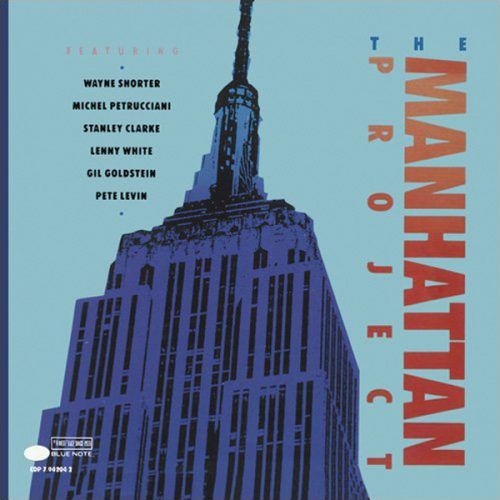
The Manhattan Project - The Manhattan Project
Odyssey of Iska - Wayne Shorter
Moto Grosso Feio - Wayne Shorter
Super Nova - Wayne Shorter
Schizophrenia - Wayne Shorter
Adam’s Apple - Wayne Shorter
The All Seeing Eye - Wayne Shorter
Etcetera - Wayne Shorter
The Soothsayer - Wayne Shorter
Speak No Evil - Wayne Shorter
JuJu - Wayne Shorter
Night Dreamer - Wayne Shorter
Videos- Videos
SPOTLIGHT- SPOTLIGHT
View All
WAYNE SHORTER “JUJU”
By Dan Ouellette Philosopher, poet, and shaman of jazz, tenor saxophonist Wayne Shorter followed up on his 1964 debut for Blue Note, Night Dreamer, with another timeless album, JuJu, recorded a mere three months later on August 3 at Rudy Van Gelder’s studio. After five years as saxophonist and composer/musical director with Art Blakey’s Jazz Messengers—a considerably long tenure with the... read more
WAYNE SHORTER “SCHIZOPHRENIA”
By Ted Panken Wayne Shorter was 33 on March 10, 1967, when he recorded Schizophrenia. It was his eleventh leader date overall, his eighth for Blue Note, and first in a little over a year, after having recorded the previous seven within the 17 months following Night Dreamer in April 1964. He was 30 months into a five-and-a-half-year association with Miles Davis, who had followed a half-year... read more
WAYNE SHORTER “THE ALL SEEING EYE”
“Wayne has absorbed a lot of the undercurrent elements of classical music in a special way. To me, this comes through in the structure of his melodies, which consistently have a structural unfolding which is much more like the themes of classical music than the vast majority of jazz composition—especially in the era going up to him. It's one of the reasons so many of his tunes are played so... read more
Wayne Shorter “Speak No Evil”
On the spectrum of jazz challenges, Wayne Shorter’s “Speak No Evil” appears to lean toward the easy side. The title track of the eminent saxophonist and composer’s 1964 masterpiece Speak No Evil sits in a comfortable and utterly approachable medium swing. Its primary theme is a series of long tones outlining placid, open-vista harmony. Its bridge resembles something from the notebook of... read more
WAYNE SHORTER: ETCETERA
In Harold and the Purple Crayon,” a children’s book from 1955, the intrepid hero, a sturdy toddler, decides to go for a walk in the moonlight. There is no moon, and so, with his purple crayon, Harold draws one, and then decides to draw a straight path to walk upon. When this leads him nowhere, he follows his crayon—under the moon’s watchful eye—through a series of adventures, conjuring... read more
WAYNE SHORTER SHARES HIS ARTISTIC MULTIVERSE WITH “EMANON”
Randy DuBurke will always remember that auspicious moment when the news arrived. It was St. Nick’s Day in Switzerland, where the Brooklyn-raised illustrator resides. After DuBurke had finished making holiday magic for his kids, an email brought an enchanted possibility for him: Wayne Shorter admired his books, and wanted to collaborate on a graphic novel and recording project. “I said,... read more
WAYNE SHORTER’S FINDS HIS GROOVE ON “ADAM’S APPLE”
It is unclear whether it was Wayne Shorter’s initial intention to do anything particularly ambitious during the two visits to Rudy Van Gelder’s studio in February 1966 that produced Adam’s Apple. Certainly, neither the repertoire—five recently composed Shorter tunes in AABA format and “502 Blues,” by pianist Jimmy Rowles, a hard drinker, as Shorter was at the time (the subtitle... read more
NIGHT DREAMER: WAYNE SHORTER’S MAIDEN VOYAGE
In a conversation at the Melbourne, Australia jazz festival in 2005, I asked Wayne Shorter, who was appearing there with his stellar quartet, if it bothered him that when he first started making solo albums in the early ‘60s that jazz was not a big seller. He replied, “It’s just like what Art Blakey used to say: ‘You can make a billion dollars on Wrigley’s spearmint gum, but you can’t... read more
News- News
View All
CLASSIC VINYL REISSUE SERIES 2025 TITLES ANNOUNCED
Blue Note Records has announced the next run of titles in the Classic Vinyl Reissue Series, which presents all-analog 180g vinyl reissues that are mastered by Kevin Gray from the original master tapes and manufactured at Optimal. Curated by Don Was and Cem Kurosman, the series continues its exploration of the... read more
BLUE NOTE RELEASES WAYNE SHORTER “CELEBRATION, VOLUME 1”
Blue Note Records has released Celebration, Volume 1, the first in a series of archival releases that the legendary saxophonist and composer Wayne Shorter curated before he passed away in 2023. This thrilling 2014 live recording captured Shorter’s acclaimed quartet with pianist Danilo Perez, bassist John Patitucci,... read more
WAYNE SHORTER QUARTET “SMILIN’ THROUGH”: SINGLE & LIVE VIDEO OUT NOW
On August 23, Blue Note will release Celebration, Volume 1, the first in a series of archival releases that the legendary saxophonist and composer Wayne Shorter curated before he passed away in 2023. This thrilling 2014 live recording captured Shorter’s acclaimed quartet with pianist Danilo Perez, bassist John... read more
CLASSIC VINYL REISSUE SERIES 2024 TITLES ANNOUNCED
Blue Note Records has announced the next run of titles in the Classic Vinyl Reissue Series, which presents affordable 180g all-analog vinyl reissues in standard packaging that are mastered by Kevin Gray from the original master tapes and manufactured at Optimal. Curated by Don Was and Cem Kurosman, the series... read more
TONE POET AUDIOPHILE VINYL REISSUE SERIES 2024 LINE-UP
Blue Note Records has announced the 2024 line-up for the Tone Poet Audiophile Vinyl Reissue Series. The acclaimed series is produced by the “Tone Poet” Joe Harley and features definitive all-analog, 180g audiophile vinyl reissues that are mastered from the original master tapes by Kevin Gray of Cohearent Audio.... read more
CLASSIC VINYL REISSUE SERIES 2023-2024 TITLES ANNOUNCED
Blue Note Records has announced the next run of titles in the Classic Vinyl Reissue Series, which will present 180g all-analog vinyl reissues of some of the most iconic masterpieces of the Blue Note catalog by jazz legends including Art Blakey, Donald Byrd, Miles Davis, Wayne Shorter, Herbie Hancock, Sonny Rollins,... read more
WAYNE SHORTER (1933-2023)
Visionary composer, saxophonist, visual artist, devout Buddhist, devoted husband, father, and grandfather Wayne Shorter has passed away at age 89, departing the earth as we know it and embarking on a new journey as part of his extraordinary life. Shorter was surrounded by his loving family in Los Angeles at the time... read more
TONE POET AUDIOPHILE VINYL REISSUE SERIES 2023 LINE-UP
Blue Note Records has announced the upcoming 2023 line-up for the Tone Poet Audiophile Vinyl Reissue Series. The acclaimed series is produced by the “Tone Poet” Joe Harley and features all-analog, 180g audiophile vinyl reissues that are mastered from the original master tapes by Kevin Gray of Cohearent Audio. Tone... read more
NEW CLASSIC VINYL REISSUE SERIES TITLES ANNOUNCED
Blue Note Records has announced the next run of titles in the Classic Vinyl Reissue Series, which presents affordable 180g all-analog vinyl reissues in standard packaging that are mastered by Kevin Gray from the original master tapes and manufactured at Optimal. Curated by Don Was and Cem Kurosman, the series... read more
WATCH WAYNE SHORTER ON “FIRST LOOK” DISCUSSING ART BLAKEY & THE JAZZ MESSENGERS “FIRST FLIGHT TO TOKYO: THE LOST 1961 RECORDINGS”
Blue Note Records has released First Flight to Tokyo: The Lost 1961 Recordings, a thrilling previously unissued live recording of Art Blakey & The Jazz Messengers captured at Hibiya Public Hall in Tokyo on January 14, 1961 during the band’s first-ever tour of Japan. The Jazz Messengers were among the first... read more


